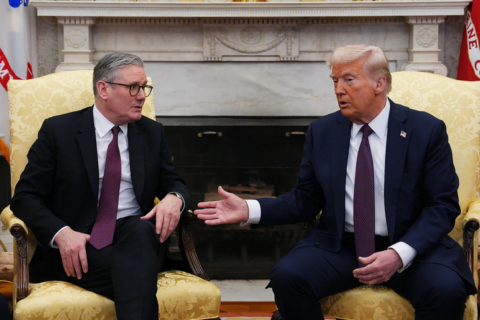The Korean War by Indy Neidell
Published 4 Mar 2025This week is really a week of planning, as Matt Ridgway unveils the plans for Operation Ripper — to follow the somewhat disappointing Operation Killer, but there are South Korean spies involved, the blockade of Wonsan, and the continuing escalation of tensions between Douglas MacArthur and Harry Truman, with people in American High Command concerned that MacArthur is bent on starting World War 3.
Chapters
00:00 Intro
00:25 Recap
00:44 Killer and Ripper
04:14 Intel and Distractions
06:57 South Korean Spies
08:06 Truman and MacArthur (Again)
(more…)
March 5, 2025
The Korean War 037 – Matt the Ripper! – March 4, 1951
Colt Boa: Rarest of the Snake Revolvers
Forgotten Weapons
Published 13 Nov 2024Of the seven revolvers Colt named after snakes, the rarest is the Colt Boa. Only a single production run of these were made totaling just 1,200 guns. They were made in 1985 as a custom order for the Lew Horton distribution company, which wanted something unique to offer its buyers. The Boa was an intermediary between the standard Colt MkV and the high-end Python. It was a 6-shot .357 Magnum with a full underlay and ventilated shroud. The only variation was in barrel length, as half were made with 4” barrels and half with 6” barrels. The serial numbers were “BOAxxxx”, with the 4” guns having odd numbers and the 6” ones getting even numbers. Five hundred of each were sold individually, but the first 100 of each length were packaged together into sequentially-numbered pairs in fancy cases.
The Boas all sold in 1985, and they are now the hardest to find for the Colt Snake collector. This particular pair is a gorgeous example of an original cased set, numbers 43 and 44.
(more…)
QotD: British and French Enlightenments
In 2005, [Gertrude Himmelfarb] published The Roads to Modernity: The British, French, and American Enlightenments. It is a provocative revision of the typical story of the intellectual era of the late eighteenth century that made the modern world. In particular, it explains the source of the fundamental division that still doggedly grips Western political life: that between Left and Right, or progressives and conservatives. From the outset, each side had its own philosophical assumptions and its own view of the human condition. Roads to Modernity shows why one of these sides has generated a steady progeny of historical successes while its rival has consistently lurched from one disaster to the next.
By the time she wrote, a number of historians had accepted that the Enlightenment, once characterized as the “Age of Reason”, came in two versions, the radical and the skeptical. The former was identified with France, the latter with Scotland. Historians of the period also acknowledged that the anti-clericalism that obsessed the French philosophes was not reciprocated in Britain or America. Indeed, in both the latter countries many Enlightenment concepts — human rights, liberty, equality, tolerance, science, progress — complemented rather than opposed church thinking.
Himmelfarb joined this revisionist process and accelerated its pace dramatically. She argued that, central though many Scots were to the movement, there were also so many original English contributors that a more accurate name than the “Scottish Enlightenment” would be the “British Enlightenment”.
Moreover, unlike the French who elevated reason to a primary role in human affairs, British thinkers gave reason a secondary, instrumental role. In Britain it was virtue that trumped all other qualities. This was not personal virtue but the “social virtues” — compassion, benevolence, sympathy — which British philosophers believed naturally, instinctively, and habitually bound people to one another. This amounted to a moral reformation.
In making her case, Himmelfarb included people in the British Enlightenment who until then had been assumed to be part of the Counter-Enlightenment, especially John Wesley and Edmund Burke. She assigned prominent roles to the social movements of Methodism and Evangelical philanthropy. Despite the fact that the American colonists rebelled from Britain to found a republic, Himmelfarb demonstrated how very close they were to the British Enlightenment and how distant from French republicans.
In France, the ideology of reason challenged not only religion and the church, but also all the institutions dependent upon them. Reason was inherently subversive. But British moral philosophy was reformist rather than radical, respectful of both the past and present, even while looking forward to a more enlightened future. It was optimistic and had no quarrel with religion, which was why in both Britain and the United States, the church itself could become a principal source for the spread of enlightened ideas.
In Britain, the elevation of the social virtues derived from both academic philosophy and religious practice. In the eighteenth century, Adam Smith, the professor of moral philosophy at Glasgow University, was more celebrated for his Theory of Moral Sentiments (1759) than for his later thesis about the wealth of nations. He argued that sympathy and benevolence were moral virtues that sprang directly from the human condition. In being virtuous, especially towards those who could not help themselves, man rewarded himself by fulfilling his human nature.
Edmund Burke began public life as a disciple of Smith. He wrote an early pamphlet on scarcity which endorsed Smith’s laissez-faire approach as the best way to serve not only economic activity in general but the lower orders in particular. His Counter-Enlightenment status is usually assigned for his critique of the French Revolution, but Burke was at the same time a supporter of American independence. While his own government was pursuing its military campaign in America, Burke was urging it to respect the liberty of both Americans and Englishmen.
Some historians have been led by this apparent paradox to claim that at different stages of his life there were two different Edmund Burkes, one liberal and the other conservative. Himmelfarb disagreed. She argued that his views were always consistent with the ideas about moral virtue that permeated the whole of the British Enlightenment. Indeed, Burke took this philosophy a step further by making the “sentiments, manners, and moral opinion” of the people the basis not only of social relations but also of politics.
Keith Windschuttle, “Gertrude Himmelfarb and the Enlightenment”, New Criterion, 2020-02.






